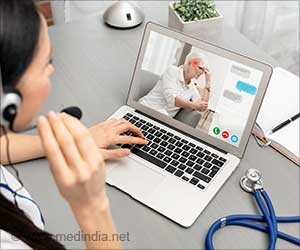Explore the comprehensive Telemedicine Practice Guidelines that empower registered medical practitioners to provide healthcare services through virtual platforms in India.
- Telemedicine Practice Guidelines (TPG) empower Indian medical practitioners to provide quality healthcare through virtual platforms
- TPG outlines communication modes (audio, video, text, data) for diverse patient interactions
- The guidelines mandate thorough documentation, fostering transparency, accessibility, and confidentiality in telemedicine consultations
The TPG encompasses diverse aspects of telemedicine, including communication methods, interaction types, RMP and patient identification, consent procedures, documentation, and fees. Additionally, they offer direction on the proper telemedicine usage based on care levels, specialties, and scenarios.
The TPG pertains to all RMPs registered under the Indian Medical Council Act 1956 and adhering to the Code of Ethics Regulations 2002. They are not applicable to unregistered or alternative medicine practitioners (1✔ ✔Trusted Source
Telemedicine Practice Guidelines
Go to source).
Telemedicine: Modes of Communication
The TPG recognizes four communication modes for telemedicine:Audio
: voice calls via phone, mobile, VOIP, etcVideo
: video calls using webcam, smartphone, tablet, etcText
: text messages through SMS, email, fax, etcData
: transmitting images, reports, scans, etc. via the internet, email, etc
Types of Interaction in Telemedicine
The TPG categorizes telemedicine interactions into three types:Patient to RMP
: Direct consultation between a patient and an RMPCaregiver to RMP
: Consultation involving a caregiver (e.g., family member, nurse) representing a patientHealth Worker to RMP
: Consultation between a health worker (e.g., ASHA worker, pharmacist) and an RMP on behalf of a patient
Identifications Used in Telemedicine
Both the RMP and the patient (or representative) must verify their identities at the start of each telemedicine consultation. Various identification methods are acceptable, including name, age, address, phone number, email, registered ID, or other unique identifiers. The RMP should also share their registration number and contact details.Consent is a Must in Telemedicine
Informed consent from the patient (or representative) is essential before initiating a telemedicine consultation. Consent can be implied or explicit based on communication mode and interaction type. The RMP must explain the purpose, benefits, risks, and limitations of telemedicine and respect the right to decline or withdraw consent.Documentation in Telemedicine
Detailed documentation of every telemedicine consultation is mandated for both the RMP and the patient (or representative). This includes consultation date and time, communication mode, identification of parties involved, consent, medical history, diagnosis, advice, prescriptions, fees, and more. Proper confidentiality and accessibility of documentation are emphasized.Protocols on Fees
RMPs are allowed to charge fees for telemedicine consultations, following prevailing norms and regulations. The fee should be transparently communicated before the consultation and collected through secure payment methods.Know the Scopes and Limitations of Telemedicine
The TPG acknowledges the potential of telemedicine to enhance healthcare in India but also recognizes its limitations and challenges. They provide tailored guidance for different care levels, specialties, and scenarios, highlighting appropriate communication modes, interaction types, consent processes, documentation standards, and prescription rules.Caution is given that telemedicine is not a substitute for in-person consultations, and its usage requires professional judgment and adherence to ethical principles and best practices. Possible risks, such as technical issues and miscommunication, are highlighted.
To conclude, the TPG aims to offer a comprehensive framework for RMPs practicing telemedicine in India, fostering awareness, acceptance, and innovation. They are expected to evolve based on evidence and feedback and are subject to compliance with relevant laws. Issued by the Board of Governors, these guidelines have the endorsement of NITI Aayog and the Ministry of Health and Family Welfare, Government of India.
Reference:
- Telemedicine Practice Guidelines - (https://www.mohfw.gov.in/pdf/Telemedicine.pdf)
Source-Medindia














